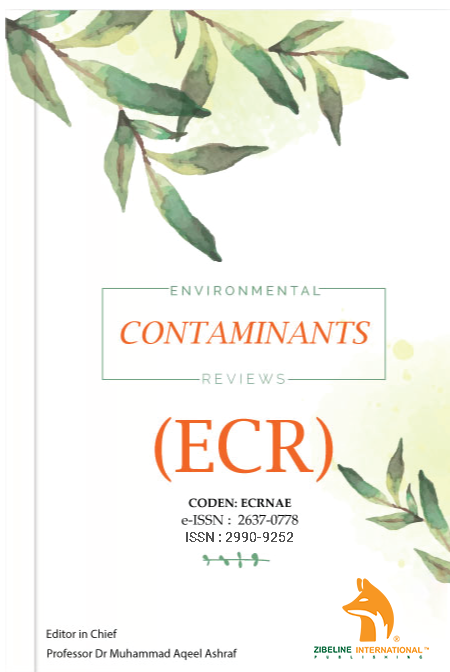
PLASTIC POLLUTION AS A DRIVER OF SEAGRASS ECOSYSTEM DEGRADATION: A SYSTEMATIC REVIEW OF IMPACTS AND MITIGATION APPROACHES
Journal: Environmental Contaminants Reviews (ECR)
Author: Ikyurgen, A., Gberikon, G.M., Azua, E.T., Edinoh, D.O
This is an open access article distributed under the Creative Commons Attribution License CC BY 4.0, which permits unrestricted use, distribution, and reproduction in any medium, provided the original work is properly cited
Doi:10.26480/ecr.02.2025.51.58
ABSTRACT
Seagrass ecosystems are essential coastal habitats that contribute significantly to biodiversity conservation, carbon sequestration, and the stability of marine food webs. However, they are increasingly threatened by plastic pollution, a growing global concern with far-reaching ecological implications. This systematic review analyzed 113 peer-reviewed articles published between 2010 and 2025 using PRISMA guidelines, revealing a growing body of literature addressing this issue. The most reported forms of plastic were fragments (34.49%), fibers (24.14%), and sticks (17.24%), commonly originating from fishing gear, textiles, and packaging debris. In terms of size, microplastics (<5 mm) accounted for 44.90%, followed by macroplastics (>25 mm, 34.69%) and mesoplastics (5–25 mm, 20.41%). Plastic interactions were most frequently observed on seagrass leaves (40.82%) and associated fauna (28.57%), affecting photosynthesis, respiration, and trophic dynamics. The review also highlights significant knowledge gaps—particularly in the tropics and underrepresented regions—and the urgent need for standardized methodologies and long-term ecological monitoring. A framework for mitigation is proposed, integrating source reduction, policy enforcement, ecosystem restoration, and community engagement as key components. This review underscores that addressing plastic pollution in seagrass ecosystems is not only vital for ecological resilience but also critical to climate action and sustainable coastal development. Future research must prioritize interdisciplinary approaches and scalable solutions to ensure the protection of these vital blue carbon ecosystems in an era of rapid environmental change.
KEYWORDS
Seagrass ecosystems; Plastic pollution; Blue Carbon; Ecosystem threats; Mitigation strategies

